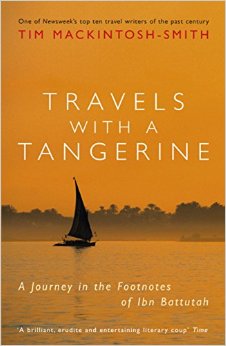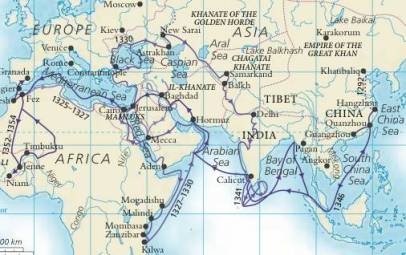The Dubai International Writers’ Centre recently held a two-part session about Ibn Battuta’s extensive travels, led by their Writer-in-Residence Tim Mackintosh-Smith. Participants were treated to a modern-day adventure as Tim Mackintosh-Smith retraced his footsteps across the globe, using Ibn Battuta’s writings as a guide and sharing his own photos from each destination.
By Sawad Hussain
Tim Mackintosh-Smith’s two sessions — one delivered in Arabic, the other in English — detailed his life’s work and travels. These were spurred on by the writings of, in his words, “not only the greatest Arab traveller of all time, but perhaps the greatest of all time” — Ibn Battuta (1304-1377). A true testament to the centre’s outreach capabilities was the diversity of those in attendance: Not only did the ages vary from teenage to adult, but more importantly there was balanced representation of native and non-native speakers of Arabic.
Mackintosh-Smith began his lecture as he did his book Travels with a Tangerine, with the words of a seventeenth-century blurb:
All master-works of travel, if you will but look,
Are merely tails that drag at Ibn Battuta’s heel.
Even though Mackintosh-Smith’s works have received widespread critical acclaim, he was insistent throughout the session that, despite the success he has achieved, all he has written is a dhayl: a tail, or a mere addition to what the Moroccan traveller had written during his fourteenth-century travels. He also said that he felt he had “committed a crime” against Battuta’s exploits by pursuing an abridged version of his legendary adventures.
Mackintosh-Smith set off with the audience from Kilwa in Tanzania, where he showed a now-ruined palace detailed by Ibn Battuta. However, the infinity pool that once existed is still very visible today. He also displayed a Chinese vase from the palace as proof of the vibrant trade occurring at that time.
Next, Mackintosh-Smith took the audience to India, Amjhera to be precise, where he recollected how he visited a site Ibn Battuta described as a “terrifying sight.” It was in fact a place where Battuta witnessed wives throwing themselves on the funeral pyres of their husbands to join them in the afterlife. From a photo of the grounds, it was evident that one of the larger rocks was still blackened from the fire, even though the site had been deserted for several centuries. Mackintosh-Smith recounted how, upon reaching the south of India, he had had the exact same meal that Battuta had written about his in travelogues, and exhibited a photograph to prove it!
On the picturesque shores of the Maldives is where the audience next found themselves, hearing how neighbouring islands claimed that Battuta had landed there first. Mackintosh-Smith delved deeply into the mystical elements of the islands: He spoke of jinn and ifriit, which play a big role in the islands’ storytelling tradition – as recorded by Battuta. Stones engraved with terrifying faces flashed across the screen as the audience heard of Ibn Battuta’s romantic encounters with the islands’ princesses.
After a brief stop at Adam’s Mountain in Ceylon (Sri Lanka), which Mackintosh-Smith scaled, the journey ended in China, in Quanzhou and Guangzhou to be exact. The audience was treated to pictures of a mosque from 1000 A.D, and learnt of how the Maliki sect is most prevalent in that part of China. Mackintosh-Smith dwelled on how the same sect is dominant in Morocco today, leading the group to ponder whether this was but a mere coincidence.
In closing, it became clear how intense Ibn Battuta’s desire was to return home. Even though he was in a predominately Muslim part of China, the culture shock still wore him down. The Writer-in-Residence pointed out how Battuta’s journey to China took up nine hundred pages or so, but his return home was documented in a mere nine.
Mackintosh-Smith’s detailed narrative made the audience feel as if they were on the journey with him, his accompanying photos helping to truly magnify this sensation of discovery. He ended by touchingly stating that he set off across the world to defend Ibn Battuta’s writings and prove to naysayers that the legendary Moroccan explorer had indeed set eyes on all that he had written about in his seminal works. One gathers from his passionate delivery and vivid evidence that Mackintosh-Smith has put forth a strong argument in support of that stated mission.
Tim Mackintosh-Smith’s books – Travels with A Tangerine (2001), The Hall of a Thousand Columns (2005) and Landfalls (2010) – are available at the DIWC or from major booksellers worldwide. Those in Dubai can also go to www.diwc.ae to read about future talks and workshops.
Sawad Hussain is an Arabic teacher, translator, and litterateur residing in Dubai.
If inspired, you can also take a virtual tour along with Ibn Battuta on Berkeley’s site.
Click HERE to read more



Be the first to comment